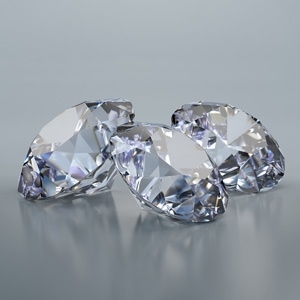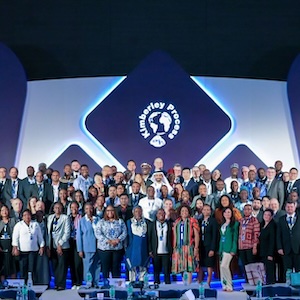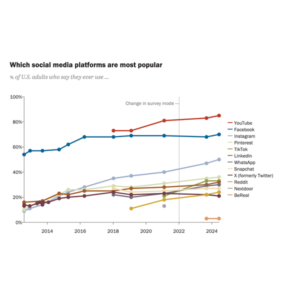
On Dec. 17, the European Union (EU) released a statement detailing the new G7 sanctions on Russian diamonds—which answers some questions, but raises a lot more.
Most of what was in the statement was expected or had been previously announced. It said the G7 will implement a direct ban on “nonindustrial natural and synthetic diamonds, mined, processed, or produced, in Russia” as of Jan. 1, 2024. This will prohibit Russia from directly selling gems to Antwerp and brings the G7 in line with the United States, which has banned the direct import of Russian diamonds since 2022.
The G7 also announced, as expected, that member countries, including the United States, will prohibit the import of diamonds mined in Russia but polished in a different country, beginning March 1. That would close the current exemption for goods “substantially transformed” elsewhere.
A note in the EU’s official registrar said the ban beginning in March applies to polished diamonds over 1 ct. That will fall to 0.5 cts. by September.
How it will be enforced remains uncertain. The statement said that “a robust traceability-based verification and certification mechanism for rough diamonds will be established within the G7,” with importers needing certification “that the diamonds are not mined, processed, or produced in Russia.” But it didn’t spell out what kind of certification will be acceptable.
“It’s not clear yet what this means from the U.S. perspective,” says Sara Yood, deputy general counsel of the Jewelers Vigilance Committee.
The announcement also contained a curveball—in particular, a sentence that said “as of 1 September 2024, the ban will be expanded to include lab-grown diamonds, jewelry, and watches containing diamonds.”
“This is the first indicator that lab-grown is definitely going to be included,” Yood says. “It’s also the first mention of watches containing diamonds as well.”
She adds that she doesn’t know whether there will be a size cutoff for the diamonds set in jewelry or watches. But she believes the inclusion of lab-grown diamonds is a good thing.
“We do think that some of them are manufactured in Russia,” she says. “The traceability requirements should go across categories. Consistency is always good.”
Some in the industry have worried that not including lab-grown diamonds could lead to a disadvantage for African diamond producers. Lab-grown diamonds could also present a possible loophole to the new rules, as importers may simply call their diamonds “man-made” as a way to evade Customs requirements.
Natural diamond associations continued to express concern about the mechanisms of the G7’s “verification and certification system,” particularly if member nations adopt the Belgium government’s proposal to have diamonds “prescreened” in Antwerp.
“The G7 countries are considering imposing a single-entry point within the G7 for the registration and inspection of rough diamond,” wrote World Federation of Diamond Bourses president Yoram Dvash in a statement. “This will oblige companies from around the world who wish to market polished diamonds within the G7 to open an office in this single point of entry.
“The proposed mechanism, as we understand it, will be detrimental to the worldwide diamond industry throughout the entire pipeline…. It is possible to create a more efficient and effective mechanism by allowing additional major diamond centers…to conduct the inspection and registration themselves.”
The new requirements exempt diamond jewelry for personal use—so if someone bought a diamond ring abroad, they wouldn’t have to declare its origin, as long as they don’t plan to resell it. “I think that’s a pretty normal thing to be able to carry your own possessions,” says Yood.
(Photo: Getty Images)
Follow JCK on Instagram: @jckmagazineFollow JCK on Twitter: @jckmagazine
Follow JCK on Facebook: @jckmagazine







